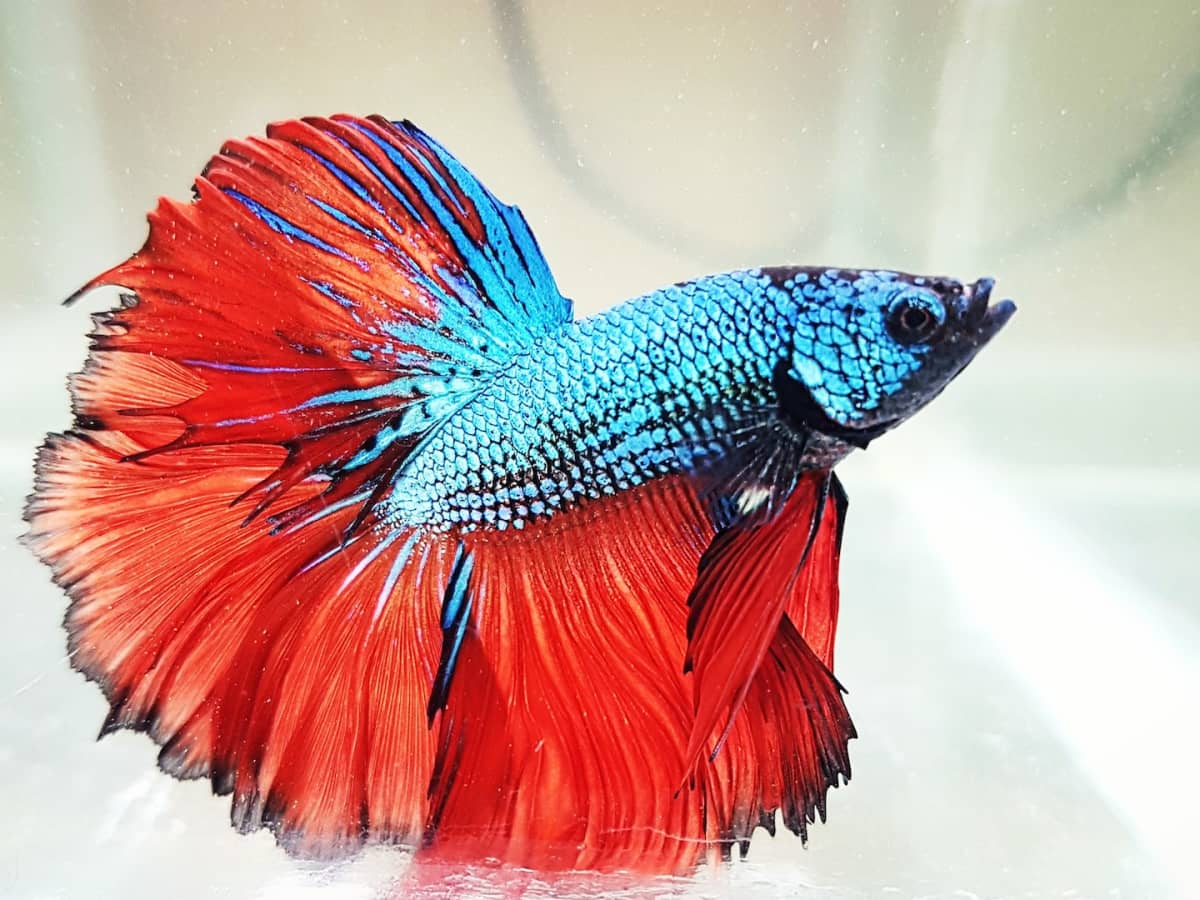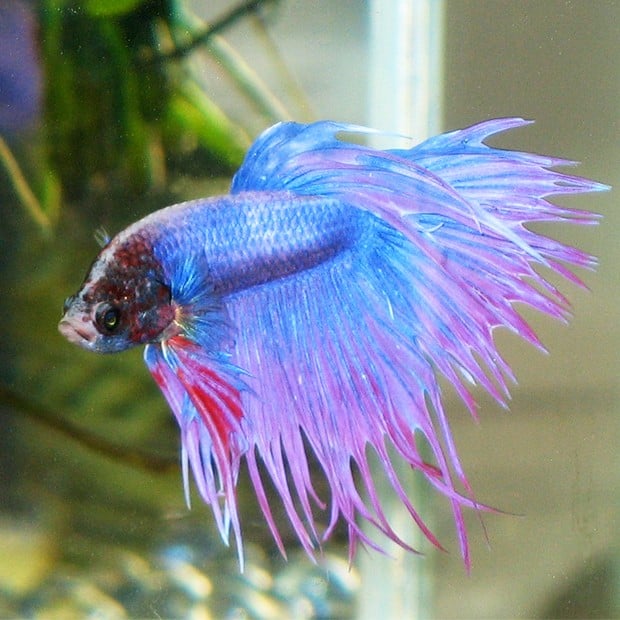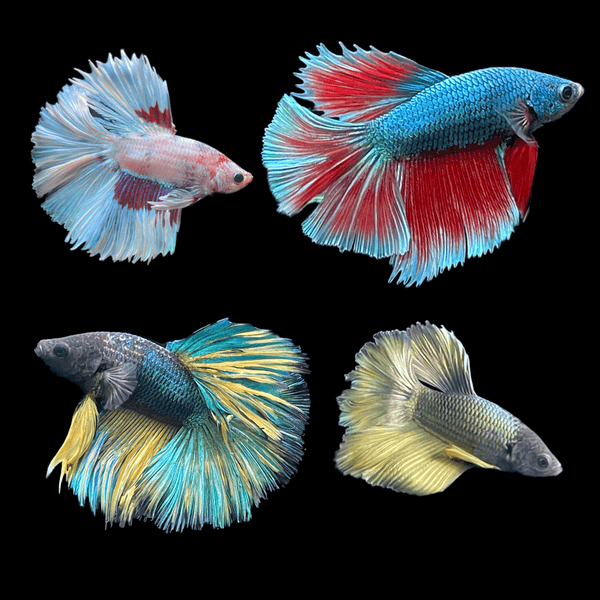How to Present Betta Fish to a Community Storage Tank Securely
How to Present Betta Fish to a Community Storage Tank Securely
Blog Article
Breeding Betta Fish: a Comprehensive Step-By-Step Guide to Successfully Raising Baby Bettas From Eggs to Adulthood
Reproducing Betta fish is a thorough undertaking that requires cautious planning and execution to ensure the effective growth of fry from eggs to develop fish. Picking genetically varied reproduction couple with desirable characteristics is just the start; developing an ideal atmosphere and understanding the ins and outs of the reproducing process are just as critical. As the male Betta carefully constructs a bubble nest and guards the priceless eggs, the succeeding phases of care and transition demand focus to detail and expertise of best methods. Just how does one browse the tough yet gratifying course of nurturing these lively creatures to their adult years?

Choosing Breeding Pairs
When starting the journey of reproducing Betta fish, picking the best reproduction sets is vital to accomplishing preferable traits and a healthy and balanced family tree - betta fish. The initial step in this process is to identify the certain traits you wish to enhance or preserve, such as shade, fin type, and physique. It is necessary to select genetically varied sets to avoid inbreeding, which can lead to health and wellness problems and unwanted features
Assess potential reproducing candidates thoroughly. A healthy and balanced male Betta needs to display dynamic colors, an active attitude, and well-formed fins, while the lady needs to additionally show lively pigmentation and a rounded tummy, suggesting readiness for spawning. Observing the temperament of both fish is important, as hostile or overly shy individuals might not breed successfully.
Keeping records of the moms and dad fish's origins can assist you track hereditary characteristics and possible concerns. Inevitably, spending time in the selection procedure will substantially enhance the chance of producing strong, lively spawn that satisfy your breeding goals.

Preparing the Breeding Container
Developing an optimum reproduction environment is an essential action after selecting ideal sets for Betta fish. The breeding container need to be specifically created to give convenience and promote the all-natural reproduction habits of the fish. Beginning with a tank size of a minimum of 10 gallons to make sure appropriate room for both the male and women Bettas.
Preserve a mild filtering system to maintain the water tidy while staying clear of solid currents that can stress the fish. Furthermore, an air stone can be included in supply oxygenation without interfering with the water surface area too much.
Temperature guideline is essential; go for a steady series of 78-82 ° F(25-28 ° C) using a reliable heating unit. The pH level must be maintained between 6.5 and 7.5, and routine water changes are essential to ensure high water quality.
Include floating plants or generating sponges to produce hiding places for the lady, while additionally urging bubble nest building by the man - betta fish. Ensure the container is free from sharp decorations and any type of prospective hazards, as the welfare of the fish should constantly be prioritized during official statement this vital stage of reproduction.
The Breeding Process
Generally, the breeding process for Betta fish includes a series of distinctive and visible habits that suggest preparedness for reproduction. The male Betta begins by developing a bubble nest at the water's surface area, which offers as a website for the fertilized eggs. This nest is vital, as it supplies a risk-free environment for the eggs until they hatch out.
When the nest is established, the man will present courtship behaviors, such as flaring his fins and exhibiting dynamic shades to bring in the woman. The lady, upon sensing the male's preparedness, will react by showing vertical red stripes along her body, signifying her receptiveness.
The fed eggs after that fall to the bubble nest, where the male carefully gathers and returns them to the nest. Following this, the male presumes duty for securing the nest and making certain the safety of the eggs till they hatch out, normally within 24-36 hours.
Taking Care Of Betta Fry
Looking after Betta fry needs cautious focus to their setting and nourishment to make certain healthy development and advancement. After hatching out, Betta fry are exceptionally little and susceptible, necessitating a secure and clean environment. Keeping a water temperature in between 78 ° F and 80 ° F is crucial, as Betta fry flourish in warm problems. Additionally, make certain that the water is free of hazardous toxic substances; regular water changes of 10-20% are recommended to maintain optimum water high quality.
Feeding Betta fry try here is similarly important. Feed them tiny amounts numerous times a day, being mindful not to overfeed, which can lead to water high quality issues.
Transitioning to Grownup Bettas
As Betta fry fully grown, transitioning them to grown-up Bettas is a vital phase that needs cautious administration of their environment and social interactions. This process typically starts when the fry reach around 6 weeks of age, whereupon they can be gradually presented to a more organized living environment.
To facilitate this transition, it is vital to make certain that the water parameters-- such as temperature level, pH, and ammonia levels-- are ideal and secure. Grown-up Betta fish prosper in cozy water (around 78-80 ° F) with a pH of 6.5 to 7.5. Gradually adjust the fry to these problems to lessen stress.
Social communications are another essential aspect; male Bettas are infamously territorial and check these guys out aggressive. Consequently, it is a good idea to different men right into individual containers as they develop. Women Bettas can be housed with each other, yet treatment should be required to check for indications of aggressiveness.
Additionally, dietary modifications should be made as the fry expand. Incorporate top quality pellets and live foods to sustain their growth and health. By managing these elements efficiently, you can advertise an effective shift to adulthood for your Betta fish.

Conclusion
Effective reproduction of Betta fish needs mindful focus to detail throughout the entire process, from choosing genetically varied pairs to supplying ideal take care of fry. By guaranteeing suitable reproduction conditions and preserving water quality, the probability of healthy and balanced children enhances significantly. In addition, a well balanced diet and progressive adaptation to adult environments are vital for the growth and growth of Betta fish. Following these steps vigilantly promotes a prospering population of Betta fish, enhancing both their wellness and vigor.
Report this page